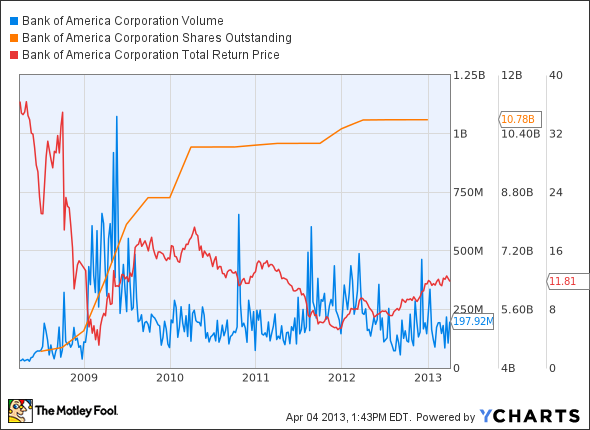In recent weeks, interest in Bitcoin, the counterculture cryptocurrency, has soared along with its price — at last count, one Bitcoin fetched $138, up 2,600% in a year and 550% in two months. A number of journalists and financial bloggers simply aren’t sure what to say about Bitcoin, because it’s not generally well-understood, even within the small circle of true believers that stand to gain the most from continued publicity. Some people will tell you that Bitcoin has a bright future as a currency based on attributes that place it at odds with every other widely accepted currency in use today. Others want to stand back and watch it rise as a store of value, caught up in the excitement of rapid price-appreciation.

Not me. I learned about Bitcoin in 2011, just before it went on its first massive run, from less than a dollar to a peak of $35 that summer. I didn’t think it was worth anyone’s time then, and it’s still not worth anyone’s time now, unless you have a taste for gambling and some money that you don’t particularly care about. The very reasons why Bitcoin has taken off today will be major reasons why its value is likely to collapse tomorrow.
Don’t believe me? Today we’ll be taking a look at one of Bitcoin’s greatest problems — its dramatic price instability — and attempting to explain why that instability will continue to undermine wider adoption. This, perhaps more than any other reason (although there are others), will cause the ultimate failure of the Bitcoin experiment.
Bitcoin will fail because it has no fundamentals beyond the news cycle
Most currencies will fluctuate in value against other currencies based on a number of known factors. Maybe the issuing nation’s economy grows stronger relative to the rest of the world, so the value of its currency grows. Maybe there’s too much currency in circulation, causing the currency to devalue relative to others. Maybe interest rates create too much inflation or too little. Generally, though, the world’s major currencies tend to be reasonably stable.
Bitcoin, however, is not stable.

Source: Blockchain.info.
Why is the price of a single Bitcoin so high right now? We can delve into any number of complex answers that may be partially right and get the big picture wrong. The simplest explanation of the current spike in Bitcoin value is that the price of a Bitcoin is directly related to the publicity given to Bitcoin. There’s no better way to highlight this than to pair the above graph with one showing Bitcoin search interest over time:

Source: Google Trends.
Here’s what Apple (NASDAQ:AAPL)‘s search interest chart looks like, for comparison:

The spike in interest in late 2011 (C) corresponded with the death of Steve Jobs. The spike in late 2012 (A) owed to the iPhone 5. Apple (NASDAQ:AAPL)’s stock price actually peaked in September of 2012, just before the iPhone 5 spike. Media-driven popular interest in large, liquid stocks — and in major currencies — generally has a low correlation to prices.
AAPL Total Return Price data by YCharts.
Of course, the argument persists that Bitcoin does have fundamentals that make it a viable and valuable currency, and over the next few days I hope to dismantle those arguments. The only real fundamental attribute of Bitcoin is a known degree of scarcity, but this alone doesn’t justify a move from $10 to $135 in two months. For now, let’s stick to the stability problem. Why does the news cycle drive prices so much? Simply put: Very few people who hold Bitcoins actually want to use them once they’ve been acquired, as the prevailing belief among Bitcoin holders is that it will continue to appreciate in price.
Bitcoin will fail because a small number of hoarders control most of the supply
Blockchain.info, which claims to be Bitcoin’s most popular wallet (every user needs a digital “wallet,” which is something like an anonymous checking account, to transact Bitcoins), provides the following statistics on its userbase and on Bitcoin itself. I’ve rounded some numbers for convenience:
Total wallet users: 180,400.
Bitcoins created to date: 11,000,000.
Bitcoin transaction volume (weekly moving average): 344,000.
Wallet users engaging in transactions (weekly moving average): 10,000.
Total Bitcoin exchange dollar volume (weekly moving average): $9,600,000.
Estimated Bitcoins transacted on exchanges (at $135 price): 71,000.
According to these figures, only about 3% of all Bitcoins are in circulation at the moment, and less than 1% of all Bitcoins currently in existence are sold on the exchanges. With less than 10% of wallet users actually engaged in transacting their Bitcoins, it becomes easier to see why even a little bit of news can cause massive price swings.
It’s actually a bit instructive to look at this against some highly liquid stocks. Bank of America (NYSE:BAC), for example, is nearly always one of the highest-volume stocks on the market. Here’s what’s happened to its price over time:
BAC Volume data by YCharts.
Bank of America (NYSE:BAC)’s share price does better when fewer of its shares are traded, as is generally the case for most things traded on public markets. Supply and demand is a relatively easy thing to explain. If I had a million shares of Bank of America (NYSE:BAC), I could sell them and live comfortably for the rest of my days, but my sale would barely move the price of a stock that experiences at least 200 times that much trading volume on any given day.
On the other hand, if I sell a million Bitcoins, the price will crash through the floor, because there simply aren’t that many people actually looking to buy any Bitcoins. The average transaction, according to recent data, was only about seven Bitcoins per wallet for only 10,000 unique wallets, and yet the price has absolutely skyrocketed. Very few people want to sell their Bitcoins, even though the user base is already fairly tiny. If even 1,000 panicked Spaniards flood into Bitcoin (this has been suggested as a primary reason for the recent spike) out of fear that their bank accounts will be confiscated, they’ll find even higher prices until anyone with substantial holdings decides to sell. And why should they sell?
The counterargument here goes something like this: More publicity will bring more people into Bitcoin, and the ecosystem will grow! This will make Bitcoin more stable, and people will be more willing to sell or transact fractions rather than whole Bitcoins, which will increase price stability as people adapt to transacting smaller quantities of a more valuable digital currency.
But here’s the thing: So long as the current holders of most Bitcoins have a greater expectation of price growth in the future, they will never put more Bitcoins on the open market than will be demanded by new users. Divisibility doesn’t matter so much as availability. You can divide a Bitcoin into a million little Bitcoin pieces and sell each piece for a fraction of a penny, but in the end you’re still only transacting $135 worth of a billion-dollar bubble. Bitcoin, by design, actually bakes in an expectation of higher prices in the future, as the Bitcoin wiki points out:
Bitcoin users are faced with a danger that doesn’t threaten users of any other currency: If a Bitcoin user loses his wallet, his money is gone forever, unless he finds it again. And not just to him; it’s gone completely out of circulation, rendered utterly inaccessible to anyone. As people will lose their wallets, the total number of Bitcoins will slowly decrease.
Therefore, Bitcoin seems to be faced with a unique problem. Whereas most currencies inflate over time, Bitcoin will mostly likely do just the opposite. Time will see the irretrievable loss of an ever-increasing number of Bitcoins. An already small number will be permanently whittled down further and further. And as there become fewer and fewer Bitcoins, the laws of supply and demand suggest that their value will probably continually rise.
Thus Bitcoin is bound to once again stray into mysterious territory, because no one exactly knows what happens to a currency that grows continually more valuable. Many economists claim that a low level of inflation is a good thing for a currency, but nobody is quite sure about what might happens to one that continually deflates. Although deflation could hardly be called a rare phenomenon, steady, constant deflation is unheard of.
A Bitcoin is an investment in the continued interest of a tiny group of people, many of whom are ironically afraid of the perceived instability of widely accepted fiat currencies. Wide acceptance of Bitcoin — and thus greater stability — would require a user base several orders of magnitude larger than the one we currently see in Blockchain’s numbers. That could happen in the future, but the hoarding of existing users acts as a barrier against wider adoption. Why would any casually interested person want to get involved with Bitcoins beyond an attempt to hoard it if the supply will always be constricted? On the other hand, a sudden influx of Bitcoins onto the exchanges, and the resulting price crash, would also undermine wider adoption, as it would break the illusion of steadily rising value that has brought more users in the first place.
There are other reasons why I feel Bitcoin is doomed to fail, and I’ll be examining those reasons over the next few days. Stay tuned for:
Why an uncertain legal standing will never resolve in Bitcoin’s favor.
Why Bitcoin’s perceived “security” and lack of transparency are not true benefits.
Why cryptocurrencies can’t succeed by rejecting the characteristics of modern (centralized) money.
Got questions? Want to weigh in? Feel free to let me know how you feel with a comment below.
The article Why Bitcoin Is Doomed to Fail originally appeared on Fool.com.
Fool contributor Alex Planes holds no financial position in any company mentioned here. Add him on Google+ or follow him on Twitter @TMFBiggles for more insight into markets, history, and technology.The Motley Fool recommends Apple. The Motley Fool owns shares of Apple and Bank of America.
Copyright © 1995 – 2013 The Motley Fool, LLC. All rights reserved. The Motley Fool has a disclosure policy.

